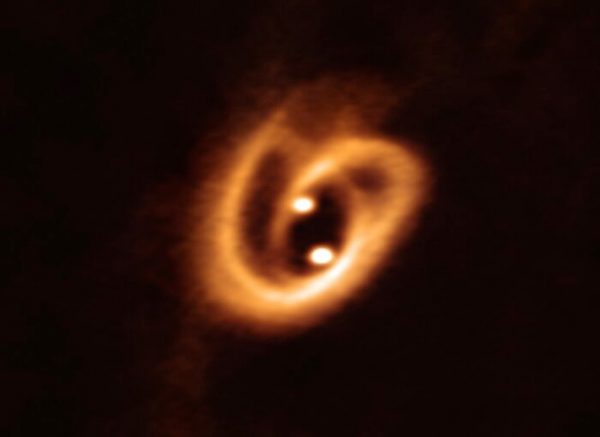Infant stars dine on a ‘cosmic pretzel’ of dusty debris – Astronomy Now – Astronomy Now Online

Two young stars whirling around each other in a vast cloud of dust known as the Pipe nebula are weaving a pretzel-like tapestry as their gravity warps surrounding material into twisted loops and swirls, part of a two-step feeding frenzy.
Taking advantage of the Atacama Large Millimeter/submillimeter Array’s high resolution, an international team of astronomers has captured a spectacular image of what’s been dubbed a “cosmic pretzel,” revealing the inner structure of the binary star system.
“We see two compact sources that we interpret as circumstellar disks around the two young stars,” said Felipe Alves, a researcher who led the study for the Max Planck Institute for Extraterrestrial Physics. “The size of each of these disks is similar to the asteroid belt in our solar system, and the separation between them is 28 times the distance between the Sun and the Earth.”
Co-author Paola Caselli called the research “a really important result.”
“We have finally imaged the complex structure of young binary stars with their feeding filaments connecting them to the disk in which they were born. This provides important constraints for current models of star formation.”
The two circumstellar discs are surrounded by a much larger disc of material, with about 80 times the mass of Jupiter. That’s the material that shows up as pretzel-shaped lobes. The larger disc provides material for the circumstellar discs surrounding the two infant suns. Material from those discs then provides the raw material for the young stars to grow.
“We expect this two-level accretion process to drive the dynamics of the binary system during its mass accretion phase,” said Alves. “While the good agreement of these observations with theory is already very promising, we will need to study more young binary systems in detail to better understand how multiple stars form.”





